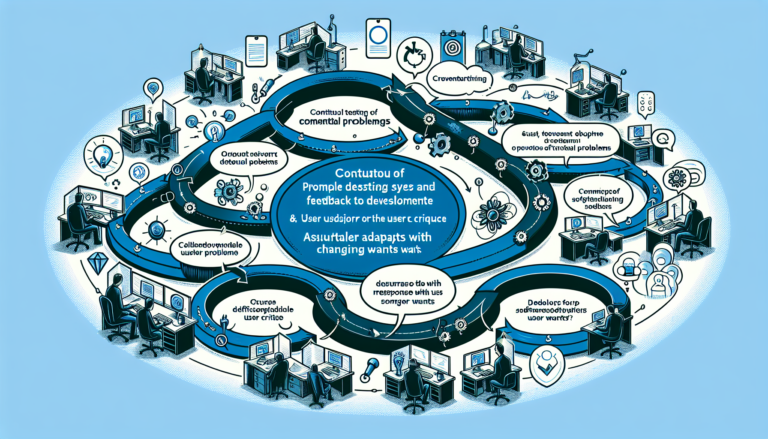Crafting Software with Heart: Elevating User Experience through Design
In the competitive realm of software development, the user experience often dictates success. User-centric design is essential for creating software that truly connects and resonates with users, transforming technology into an indispensable part of daily life.
Consider stepping into a home tailored just for you, where every detail enhances your comfort. This is the essence of user-centric software design—a seamless convergence of functionality and empathy that ensures users feel supported and understood. Crafting such software goes beyond basic operation; it’s about creating genuinely engaging experiences.
User-centric design starts with a deep understanding of your audience. It’s essential to step beyond conventional demographic data and develop detailed user personas that capture specific challenges and goals. This empathetic approach to design allows for decisions that truly enhance user experiences, transforming software into a valuable extension of the user’s activities.
To navigate this design journey effectively, simplicity is key. A streamlined, intuitive interface cuts through digital noise, allowing users to meet their objectives with ease. In our complex digital world, simplicity is a beacon of clarity, offering users a refreshing and straightforward path to success.
Consistency is also crucial. Imagine reading a book where each chapter shifts in style or narrative voice; it would be disorienting. Similarly, a consistent user interface fosters familiarity, reducing the learning curve and ensuring smooth, intuitive interactions across the software.
In our digital age, responsiveness has become imperative. Software must adapt seamlessly across a range of devices, akin to water fitting naturally into various containers. This flexibility mirrors the modern user’s demand for a versatile and convenient digital experience.
Accessibility enhances user-centric design by fostering inclusivity. Designing software accessible to all users, regardless of their abilities, is not only a technical requirement but also a moral commitment, expanding the technology’s reach and impact.
Navigation should be as intuitive as turning the pages of a captivating book, where each step follows naturally and keeps users engaged. This intuitive flow prevents frustration and enhances user satisfaction.
Yet, the journey doesn’t stop at the software’s launch. User-centric design demands continuous engagement through testing and feedback to adapt and improve based on real user interactions. These insights are invaluable, guiding software evolution in alignment with users’ changing needs.
For businesses, user-centric design is a powerful asset. By creating engaging and satisfying user experiences, companies cultivate lasting loyalty. Satisfied users are likely to become repeat users, drawn back by software that consistently meets their needs and expectations.
It’s essential to integrate user-centric design with business strategies. Design should support brand identity and align with business goals, whether they aim to drive sales or boost engagement. Utilizing data insights refines design decisions, ensuring the software delights users while achieving strategic business objectives.
Scalability is essential for keeping pace with a growing user base. As businesses evolve, their software needs to adapt by incorporating new features and responding to market demands with agility.
Ultimately, user-centric design synthesizes expertise with empathy, crafting not just software but also intuitive, personalized experiences. This journey may be challenging, but the rewards—turning software into a trusted companion—are well worth the effort.
This design narrative transcends technology; it tells a human-centered story where software respects its users, transforming interactions into meaningful experiences. For further insights on embracing a user-centric approach, explore "SOFTWARE SIMPLIFIED: Navigating the Development Landscape," available at Amazon. This resource offers guidance through the complexities of technology, always prioritizing the user at its core.






